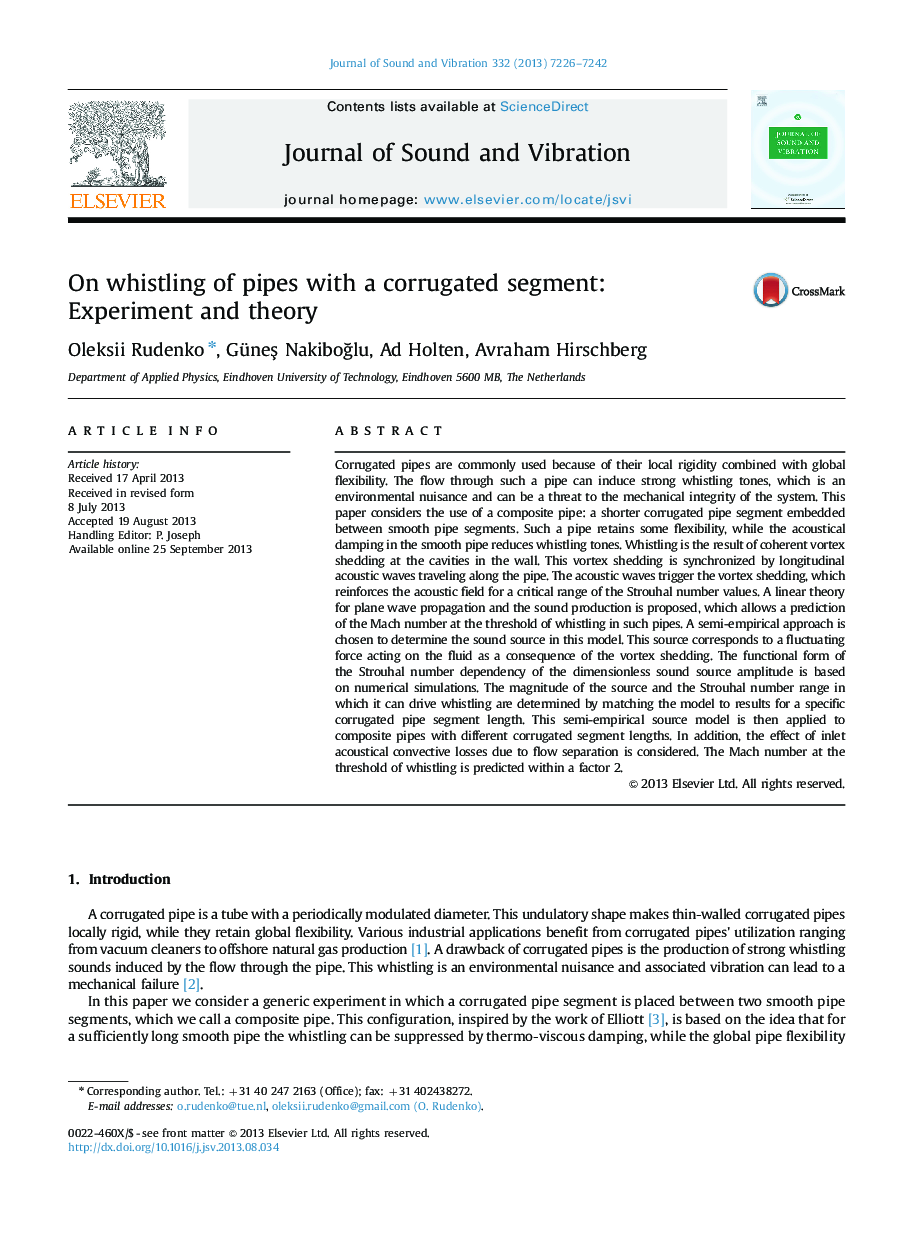| Article ID | Journal | Published Year | Pages | File Type |
|---|---|---|---|---|
| 10289271 | Journal of Sound and Vibration | 2013 | 17 Pages |
Abstract
Corrugated pipes are commonly used because of their local rigidity combined with global flexibility. The flow through such a pipe can induce strong whistling tones, which is an environmental nuisance and can be a threat to the mechanical integrity of the system. This paper considers the use of a composite pipe: a shorter corrugated pipe segment embedded between smooth pipe segments. Such a pipe retains some flexibility, while the acoustical damping in the smooth pipe reduces whistling tones. Whistling is the result of coherent vortex shedding at the cavities in the wall. This vortex shedding is synchronized by longitudinal acoustic waves traveling along the pipe. The acoustic waves trigger the vortex shedding, which reinforces the acoustic field for a critical range of the Strouhal number values. A linear theory for plane wave propagation and the sound production is proposed, which allows a prediction of the Mach number at the threshold of whistling in such pipes. A semi-empirical approach is chosen to determine the sound source in this model. This source corresponds to a fluctuating force acting on the fluid as a consequence of the vortex shedding. The functional form of the Strouhal number dependency of the dimensionless sound source amplitude is based on numerical simulations. The magnitude of the source and the Strouhal number range in which it can drive whistling are determined by matching the model to results for a specific corrugated pipe segment length. This semi-empirical source model is then applied to composite pipes with different corrugated segment lengths. In addition, the effect of inlet acoustical convective losses due to flow separation is considered. The Mach number at the threshold of whistling is predicted within a factor 2.
Related Topics
Physical Sciences and Engineering
Engineering
Civil and Structural Engineering
Authors
Oleksii Rudenko, GüneÅ NakiboÄlu, Ad Holten, Avraham Hirschberg,
